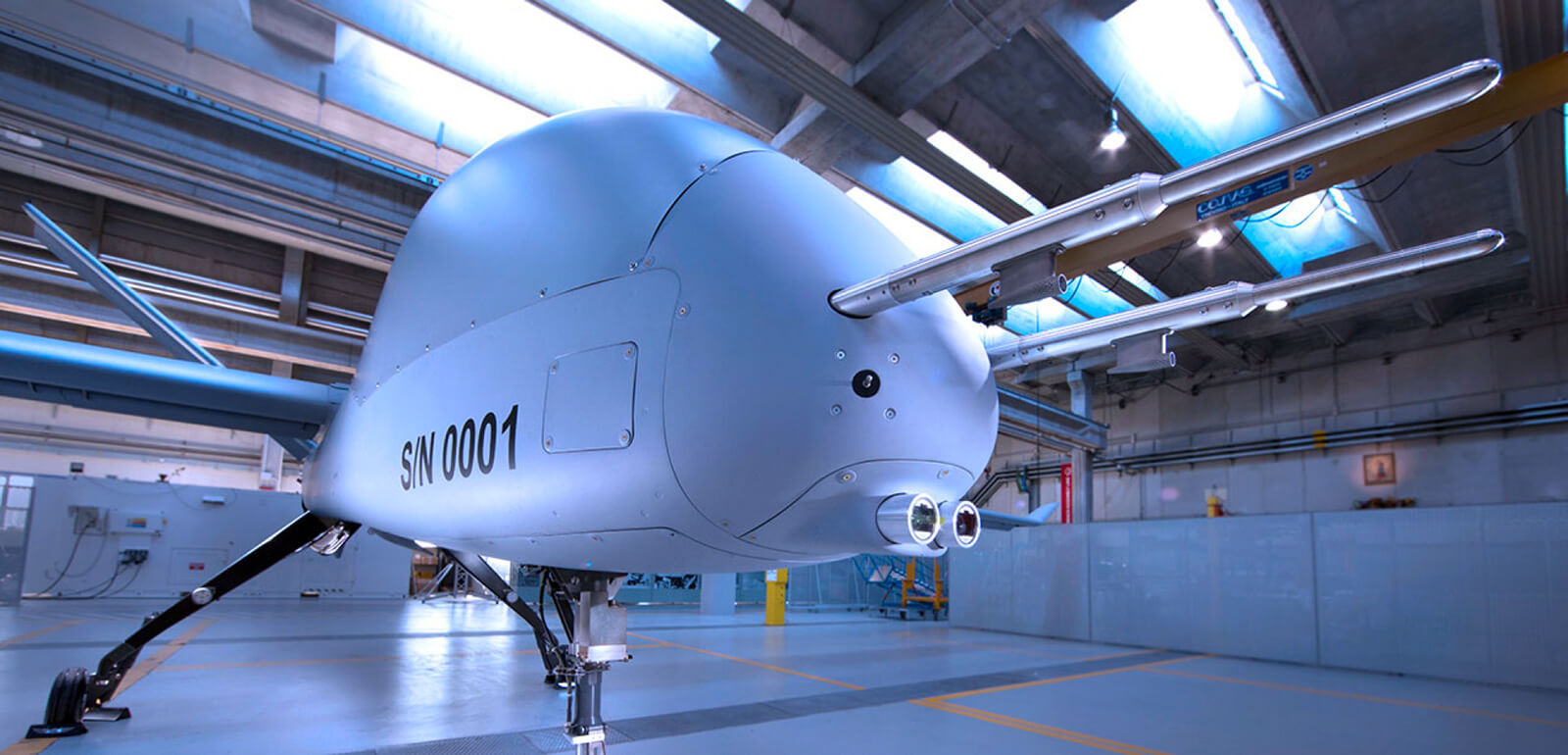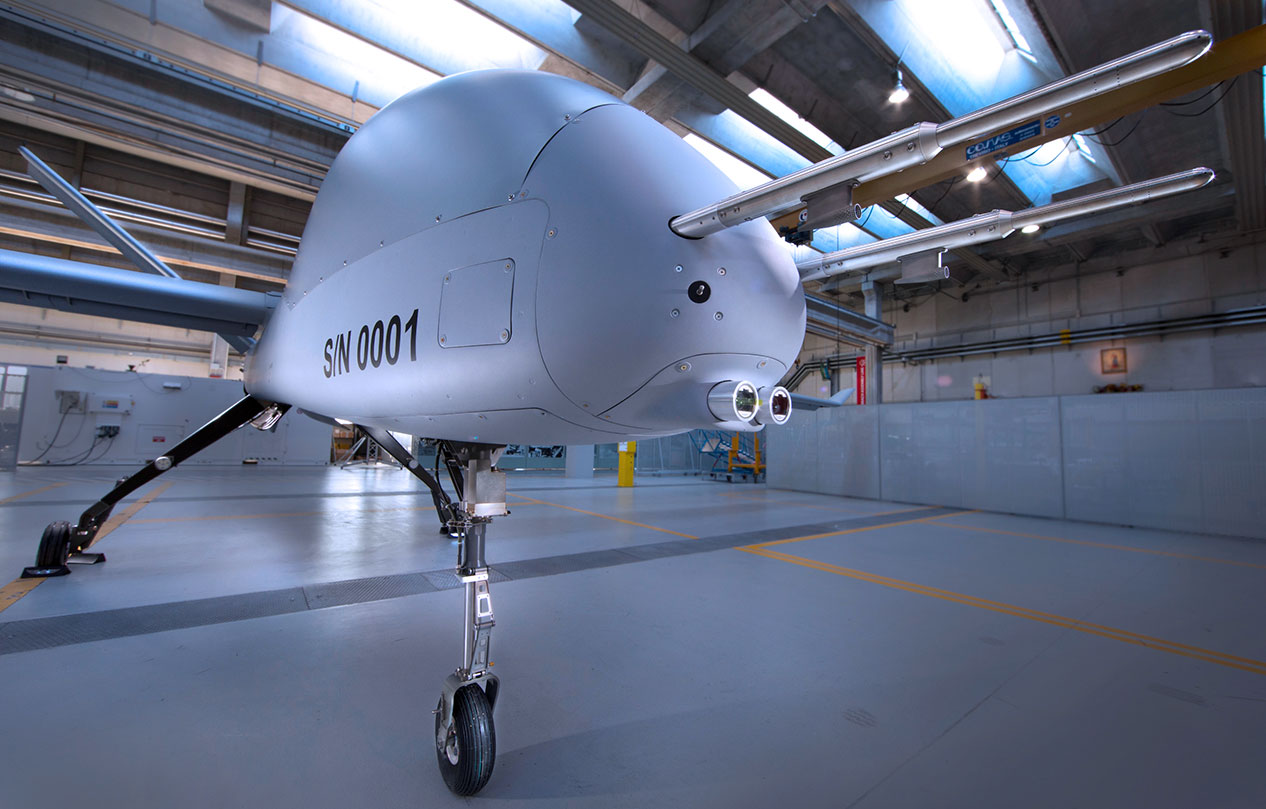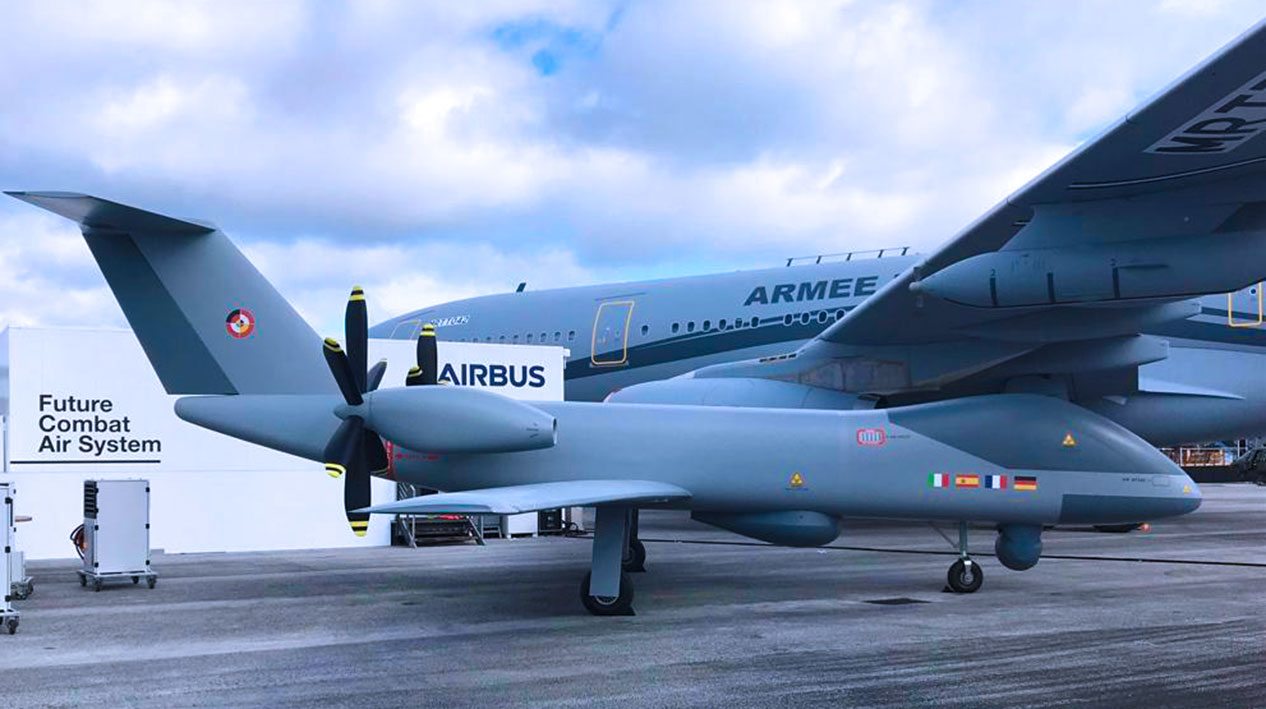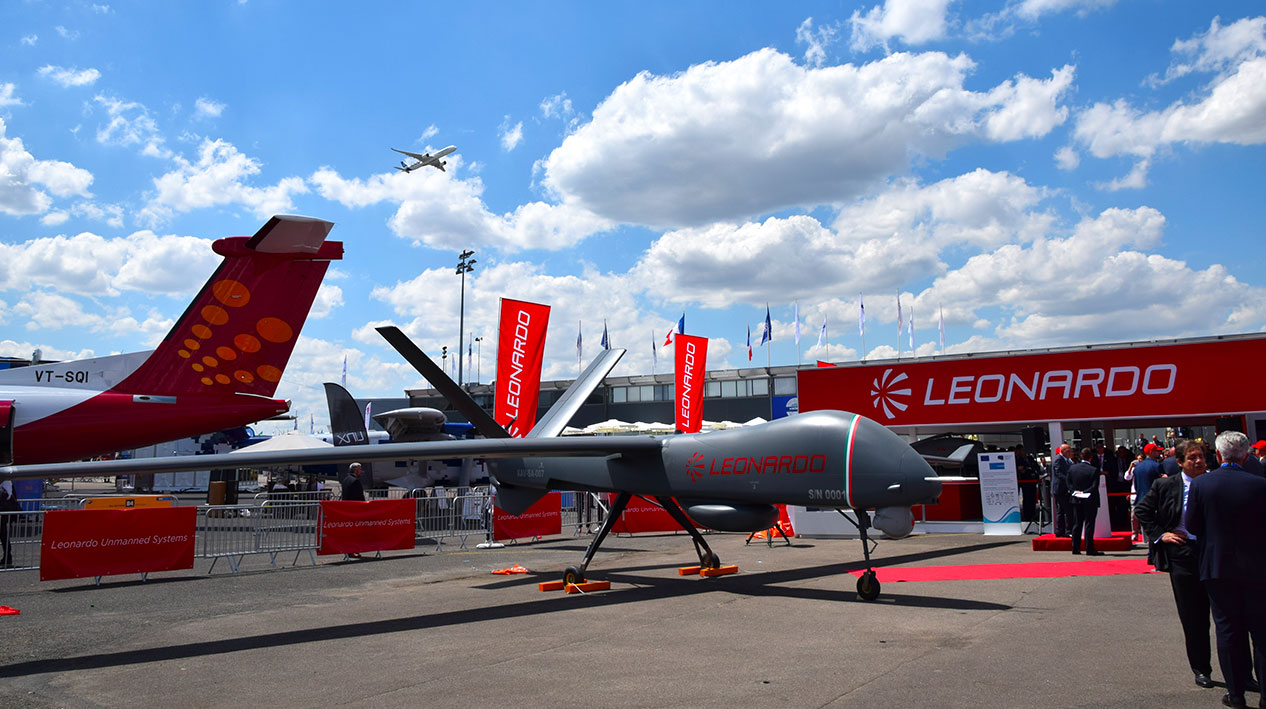Invent
Game of Drones
The evolution of drones knows no boundaries and is drawing more and more curious people, even from outside the aviation sector, while at the last airshow the new Falco Xplorer has been revealed.
Jul 2019
In recent years, Unmanned Aerial Vehicles, often also known as drones or sometimes called more technically RPAS (Remotely-Piloted Air System), have been a major interest for markets and the press around the world. Drones have even become a "common object” in public opinion.
From an aeronautical point of view, UAVs are distinguished by the length of their wings, which are also narrow and this is synonymous with efficiency. The challenge they face is to stay in the air for as many hours as possible, using as less fuel as possible. For this reason, among the basic on-board elements for a UAV along with the electronics and the communications system, the engine plays a key role in offering highly reliable performance.
In the defense industry, for example, drones have now accumulated considerable numbers: about 5 million flight hours recorded in 2018, in which more than 360,000 missions were completed by the Predator family (the first ever UAV program by the U.S. Air Force). Nowadays, the evolution of these machines knows no limits.
The genesis of drones, in military applications, took place at the end of the ‘80s, under the American Admiral Thomas J. Cassidy. After a career in the U.S. Navy, he decided to leave the armed forces to acquire and become the CEO of General Atomics, a company that was having difficulties at the time. Thanks to his significant technical-operational knowledge of weapon systems and of the Pentagon bureaucracy, over the years he succeeded in asserting the operational concept of the drone as well as the need for them within the armed forces.
The new Falco Xplorer's maximum takeoff weight is 1.3 tons, it has a load capacity of 350kg, a 24h long autonomy and a satellite data link for operations outside terrestrial radio coverage.
Starting right from the genesis, these aircraft - being the exceptional result of the great knowledge and intuition of a man capable of anticipating a technological era – have even evolved and are going through their technological parable in different parts of the world. In fact, since their invention, they have marked meaningful milestones in the military field: just for example, their contribution in the "war on terror" was a breakthrough, since the tragic 11th September and through the capture of various terrorists. But that is another story.
Back to Admiral Cassidy, after the foundation of the Pentagon's first real UAV program, the Predator, the initial capabilities of these aircraft to be remotely controlled (albeit on sight, with a maximum range of 150 km) and to stream images in real time grew very rapidly. Shortly after, communication capabilities were enhanced and higher performance controls were developed, including satellite connection: at that point the drone reached a decisive operational capacity.
Today, the UAV industry is expanding rapidly: in addition to the United States and Israel, several countries are now progressing in terms of knowledge, skills and design for these machines. In particular, experts have focused on the integration of the complete system and technologies, such as aeromechanics, electronics, sensors and communications: disciplines that make a difference in the development of such platforms. Among the most active countries on the market are Turkey, India, several European countries (with the EuroMALE project, for example), and even more so China.
On the other hand, a large number of equally relevant applications exists in the civil sector. These include, for example, aerial observation or air pollution control, crime prevention monitoring, geological analysis, disaster relief and interception, sea surveillance and much more. There are even experts who say that one day the first "flying taxis" will be conceived as UAVs, controlled by hi-reliability remote consoles.
Among the large Italian industries, without doubt Leonardo has invested significantly and has focused continuously, likewise investing in technological innovation, on the world of drones and their applications, full circle. For example, a few days ago, in Turin, a special Drone Contest was officially launched. The objective of this initiative is to promote the development of both technology regarding artificial intelligence applied to drones, both the start of an ecosystem, a virtuous intertwining, that involves large industry, universities and institutes, PMI, spin-offs and start-ups.
And during the last international exhibition in Paris, the "Falco Xplorer", the newest and largest drone produced to date by Leonardo, has just been unveiled. It is the first of its size to have a dual use: indeed, it was designed for both military and civil applications. Plus, for experts and aficionados of the sector “Falco” is an already well known name: Leonardo's first RPAS aircraft was chosen by 5 countries and its successor, Falco EVO, was selected both by the United Nations for its humanitarian mission MONUSCO, and by the European Union for its research and monitoring program in the Mediterranean, Frontex.
The new Falco Xplorer has a greater load capacity (350 kg) and a 24 hours long autonomy, with a satellite data link for operations outside terrestrial radio coverage. Its maximum takeoff weight is 1.3 tons. In the next weeks, the new drone is going to complete its maiden flight from Trapani airport (Sicily) and soon will obtain certification for flying over non-segregated areas, which allows it to approach the civil market. Moreover, on the military side, it is not subject to the US Government ITAR regulations(International Traffic in Arms Regulations): in fact, the new UAV was designed and built entirely in Europe by Leonardo. The first customers will see delivery starting in2020.
In the age of robotics and artificial intelligence, drones embrace a new frontier: they are actually linked to pilots, who will gradually see their activities transformed and their jobs performed within a control room equipped with top digital technology. Perhaps tomorrow's pilots will face fewer exhausting journeys and fewer consecutive flight hours; what is certain is that technological evolution appears increasingly to be starting to change the way we live and work.








